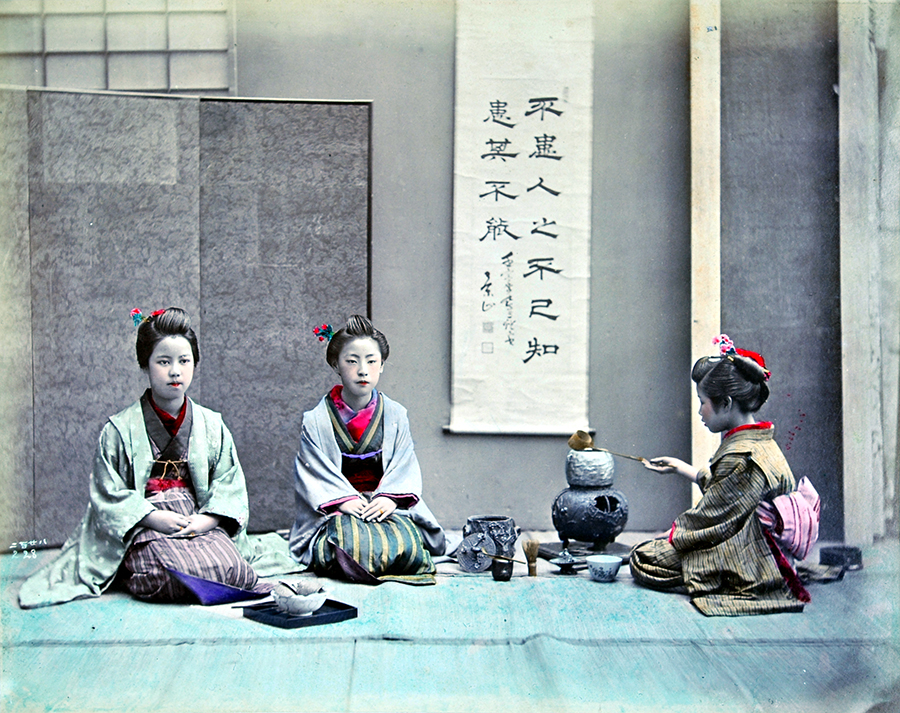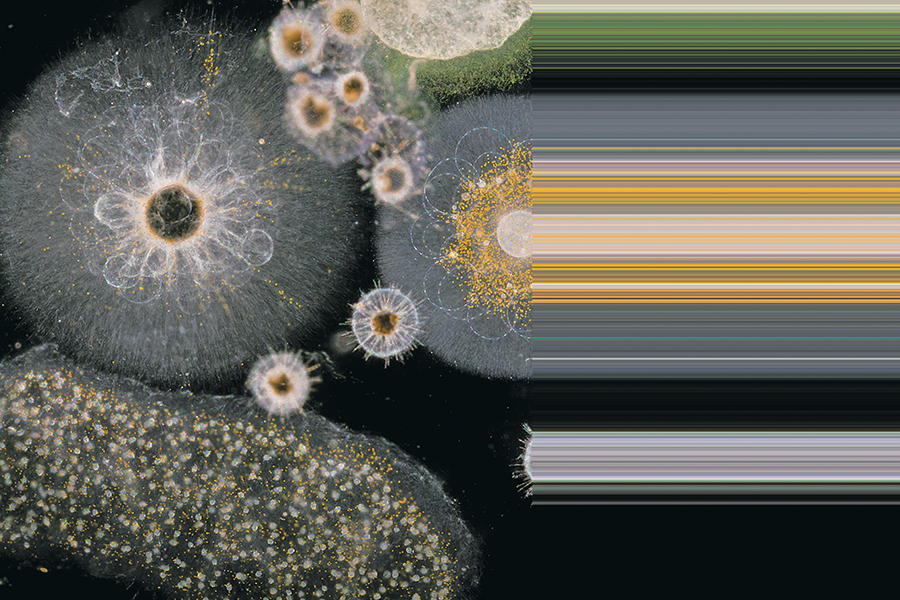Shows
Kyotographie: Kyoto’s International Photography Festival

Kyotographie co-founders and directors Lucille Reyboz and Yusuke Nakanishi started the event in 2013 to promote the medium of photography in Kyoto after a visit to the Rencontres d’Arles, an annual summer photo festival in France. They were determined to create a comparable event in Japan that would bring together people from around the world. Kyotographie is now a growing international photography festival in Japan, held over four weeks at the height of the spring season in Kyoto. It features over 20 widely recognized international photographers across 15 venues, and fosters opportunities for emerging photographers through its satellite program, KG+. The spaces of Kyotographie guide visitors through iconic traditional Japanese and contemporary buildings of the old capital, some of which are otherwise inaccessible to the public.
Over at the Toraya Kyoto Gallery is a display of Meiji-period photographs from the collection of Paris’s Guimet National Museum of Asian Arts. Conceived by French industrialist Émile Guimet after his travels around Japan, China and India to study Asian religions and cultures, the cultural institution was founded in Lyon in 1879. The museum and its collection were moved to Paris in 1889, and became a national museum in 1929. In 1945 the Guimet National Museum received the Louvre’s holdings of Asian art, and since then has become the largest collection of East Asian art outside of Asia.
Among its collection are many precious photographs taken in Japan during the late Edo and Meiji periods (which span the late 19th and early 20th century). The exhibition at Toraya Kyoto Gallery introduces 19th-century photographic prints documenting different aspects of Japanese tea culture, where delicate hand-coloring on the images provides warm accents. In Kyoto, the birthplace of the cha-no-yu tea ceremony, tea culture naturally connects with traditional Japanese sweets, known as wagashi. These photographic images of tea picking, plantations and ceremony show a cultural appreciation that blends harmony and tranquility. One such work by Suzuki Shinichi (1835–1918) from the 1880s is a studio composition that depicts three young ladies, carefully posed. The image shows how deep green tea is rooted in Japanese culture and offers a rare opportunity into a world that is now considered history.

Another standout exhibition at this year’s Kyotographie is “Plankton: A Drifting World at the Origin of Life,” featuring the project of French biologist Christian Sardet, Japanese artist Shiro Takatani and composer Ryuichi Sakamoto. Seeds of the collaboration were planted in 2015 when Takatani first saw Sardet’s photo books of plankton (a broad term referring to the bionetwork of organisms that inhabit large water bodies and drift along with their currents) and immediately thought of doing an installation based on the images. Sardet is a pre-eminent biologist from France; an enthusiastic mariner, he has been using macro- and micro-photography to create beautiful images of all different kinds of plankton dwelling in seas across the world. “Man and plankton are intimately linked,” said Takatani in an interview with ArtAsiaPacific, “We are dependent on the planktonic ecosystem, though through this project, we invite everyone to explore their role in the cosmic world.”

For Kyotographie, Sardet traveled to Shimoda, a coastal city in Japan’s Shizuoka prefecture, to photograph and film plankton. This group of work is juxtaposed with the scientist’s existing repository of imagery. Takatani designed the installation so that viewers are able to spend time with all the selected images and look at different kinds of plankton up close. He also wanted the audience to experience what it feels like to be surrounded by these organisms; hence the overall setup of the room is like a garden. Along with photographs hung on the surrounding walls, 12 monitors showing moving imagery of plankton, accompanied by sound composed by celebrated Japanese musician Ryuichi Sakamoto, were installed in the middle of the space. The work lies in the intersection between science, technology, design and art, which Takatani believes is the “future of photography.”

In addition to its main exhibition lineup, Kyotographie is known for its satellite event program, KG+. Each year an emerging artist from KG+ is nominated for the KG+ Award by Grand Marble. This year's winner is 35-year-old Hong Kong-based artist Yan Kallen, who created a photographic series that explores a newfound awareness of the connection between the self, the social realm and the realm of nature. His work “No Coming/No Going,” which is showing at Kaho Gallery, a former studio of master painter Akira Kaho located close to a large Zen temple named Tofukuji, was inspired by renowned Vietnamese monk and peace activist Thích Nhất Hạnh. Displayed in an old Kyoto house surrounded by a beautiful garden, the intention of the work is for the audience to stop, rest, be calm and look at the work quietly. As part of his award prize, Yan will be showcased as part of the main Kyotographie festival in 2017.
Kyotographie founders began this project with no budget and connections; all they had to rely on was their own passion. Nonetheless, for the past three years, the festival has become one of Asia’s leading photography festivals, and it will be fascinating to see how it will develop in the coming years.
Kyotographie: International Photography Festival is currently on at various venues around Kyoto, Japan, until May 22, 2016.







